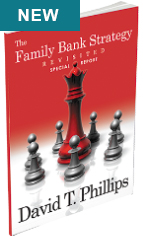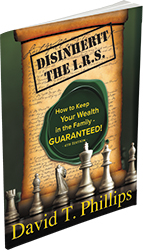
Return of Premium Term
By Todd Phillips
Free Parking
You’re driving in downtown looking for parking at your new job when you see a sign which says “Parking on the South side: $1 per day; Parking on the North side: $1.50 per day.” You tally up your costs and estimate you’ll save at least $10 per month parking on the South side. Naturally you pull up to the South curb, but walking into your office on the North side you read a sign that says “All North side parking fees will be refunded at the end of the month.” With your net cost of $0 to park on the North side the choice is obvious; you commit to North side parking.
The same analogy can be used comparing regular Term Life Insurance to Return of Premium Term Life Insurance (ROP Term). Unlike traditional Term Insurance where you buy coverage for a specified term period such as 15, 20 or 30 years but get nothing back if you outlive the term, ROP Term will pay a fat check of all the monies you had paid towards the policy. In fact, on most ROP Term policies you don’t have to wait until the end of your Term to get money back. A percentage of your premiums can become available after 5 to 10 years into the policy. Generally the longer you keep the policy the higher percentage you'll get back up to 100%. Note: If you die during the term period the most your beneficiaries will get is the death benefit without any premium return.
ROP Term Costs
ROP Term typically costs more than a traditional Term and the shorter the term the more expensive it will be compared to the traditional term. However, the extra cost is justified by those who have the confidence they will outlive their policy or by those who can't get over the feeling that term life insurance is money down the drain if the insurance benefit is not paid out.
Buy Term and Invest the Difference
A lot of our clients still choose the cheap Traditional Term because they think they can take the difference between Traditional Term and ROP Term and invest the difference in savings. While this is true, few ever actually invest the savings, and those who do need to make more on their investment side accounts than the money accruing in the ROP policy.
Here’s an example using current term prices: Let’s take a male age 35 with a preferred rating buying a 30-Year Traditional Term policy with $500,000 coverage vs. buying ROP for the same benefit. The traditional policy premium is $465 per year and the ROP is $916 (a difference of $451). Over the course of the 30 years he paid $27,480 for the ROP and $13,530 for the Tradition Term – ($13,530 more for the ROP). If he were to invest the savings each year into a side fund he would need to average at least a 4.25% return to breakeven. Sure 4.25% is attainable and you probably could exceed that return, but remember the ROP is guaranteed.
Consider that the S&P 500’s 10 year return from March 1 of 2000 to March 1, 2010 was (-.26%). In other words, if you hypothetically put in $10,000 in the S&P 500, the most commonly used stock market benchmark, (dividends not included) that $10,000 would have dropped to $7,448. And with interest rates on CDs yielding less than 2%, 4.25% guaranteed doesn’t sound so bad. But more importantly in my opinion is serves as a forced savings. You set up to have the premiums automatically deducted from your bank account and before long, your ROP Term is over and you have $30,000 waiting for you.
Don't Delay!
Caution: Don't delay! Many insurers are discontinuing ROP Policies because of the increased reserve requirements to cover the guarantees.




